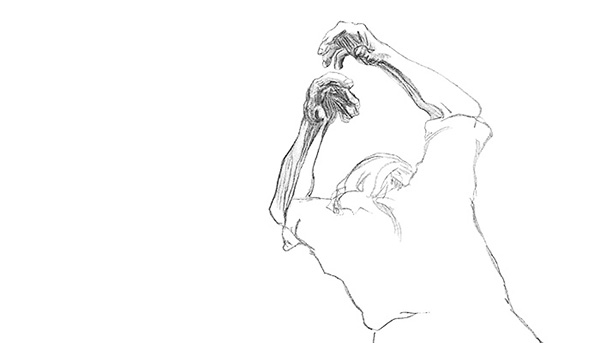Figure adapted from
The Black Anna, Käthe Kollwitz, 1903. Graphite with white and orange chalk on darkened blue-green laid paper. Dr. Richard A. Simms Collection. The Getty Research Institute,
2016.PR.34. © 2019 Artists Rights Society (ARS), New York
OPENING NEXT MONTH
| |
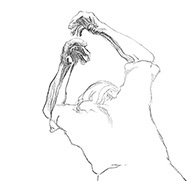 Figure adapted from The Black Anna, Käthe Kollwitz, 1903. Graphite with white and orange chalk on darkened blue-green laid paper. Dr. Richard A. Simms Collection. The Getty Research Institute, 2016.PR.34. © 2019 Artists Rights Society (ARS), New York
Figure adapted from The Black Anna, Käthe Kollwitz, 1903. Graphite with white and orange chalk on darkened blue-green laid paper. Dr. Richard A. Simms Collection. The Getty Research Institute, 2016.PR.34. © 2019 Artists Rights Society (ARS), New York
|
Käthe Kollwitz: Prints, Process, Politics
Opens December 3, 2019 | The Getty Center
As a witness to experiences of poverty, injustice, and loss in society during a time of turbulent political change in the early 20th century, German printmaker, sculptor, and teacher Käthe Kollwitz created graphic work that resonated with a wide audience over her 50-year career. This exhibition presents a selection of works on paper from the GRI's Dr. Richard A. Simms Collection and sheds light on Kollwitz's creative process and political expression through preparatory drawings, working proofs, and trial prints.
Gallery tours take place on Tuesdays and Thursdays, through March 26, 2:00 p.m. except for December 24, 26, and 31, 2019, and January 2, 2020.
Learn more about this exhibition as well as all of the GRI's exhibitions and events.
EVENT
| |
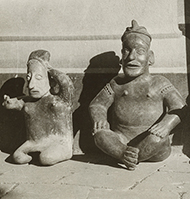 Mexican antiquities offered in the international art market, ca. 1940. The Morgan Library & Museum, New York. Gift of The Pierre Matisse Foundation, 1997
Mexican antiquities offered in the international art market, ca. 1940. The Morgan Library & Museum, New York. Gift of The Pierre Matisse Foundation, 1997
|
"Good Pieces in Sight": The US Market in Mesoamerican Antiquities circa 1940
Lecture | November 14, 2019 | 7:00 p.m. | The Getty Center
In this keynote lecture, Megan E. O'Neil, assistant professor of art history and faculty curator of the Art of the Americas at Emory University, examines the changing US art market in antiquities from Mexico and Central America in the mid 20th century by focusing on Pierre Matisse and Earl Stendahl, art dealers in New York City and Los Angeles, respectively. This keynote lecture opens the symposium "Collecting Mexican Art before 1940: A New World of Mexican Antiquities" taking place at the Getty Center on November 15, 2019.
Reserve a free ticket.
| |
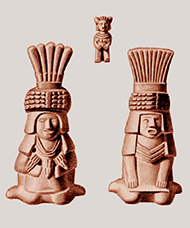 Drawing of Mexican antiquities (detail, color modified), Maximilian Franck, 1829. Trustees of the British Museum, Am2006, Drg.128
Drawing of Mexican antiquities (detail, color modified), Maximilian Franck, 1829. Trustees of the British Museum, Am2006, Drg.128
|
Collecting Mexican Art before 1940: A New World of American Antiquities
Symposium | November 15, 2019 | 10:00 a.m.–5:30 p.m. | The Getty Center
Presenting the efforts of curators and scholars, this international symposium investigates the broader role of pre-Hispanic art in the history of the art market and in the formation of international collections and institutions with speakers focusing on early collections assembled between the 19th and mid-20th centuries. The symposium is the inaugural event associated with the GRI's new Pre-Hispanic Art Provenance Initiative, which responds to the pressing need for preservation of ancient Mesoamerican heritage and its provenance.
Reserve a free ticket.
PUBLICATION
Käthe Kollwitz: Prints, Process, Politics
Edited by Louis Marchesano
Exploring Käthe Kollwitz's printmaking through progressions of preparatory drawings, proofs, and rejected images, this exhibition catalog provides a bird's-eye view of the artist's sequences of images featured in the GRI upcoming exhibition as well as the interrelationships among prints produced over multiple years. The volume delves into how Kollwitz transformed images with technical and formal experiments as well as seemingly endless adjustments which demonstrate her dedication to making political, emotional art.
Reserve this title.
NEW FOR RESEARCHERS
| |
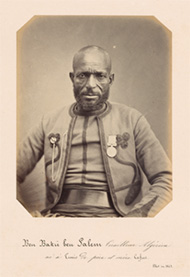 Portraits of Algerian soldiers for the Collection anthropologique du Muséum de Paris (detail), 1863. Getty Research Institute, 2018.R.27
Portraits of Algerian soldiers for the Collection anthropologique du Muséum de Paris (detail), 1863. Getty Research Institute, 2018.R.27
|
Léopold Maigné, Monuments remarquables de Tlemcen XI, XII, XIII siècles: restaurés et photographiés de 1853 à 1864
Finding Aid
This collection comprises 21 albumen photographs by Léopold Maigné who, as the French government architect in Algeria between 1844 and 1872, documented and restored historical buildings and archaeological sites in and around Tlemcen, Algeria. Considered the "capital of Maghreb," the city of Tlemcen was founded on the site of the Roman military outpost of Pomaria. Tlemcen successively supported Roman, Christian and Islamic cultures, and is one of the most architecturally significant cities in North Africa.
Browse the finding aid.
CONNECT WITH US
Follow us, learn about what we do, and tell us about your visit!
 Figure adapted from The Black Anna, Käthe Kollwitz, 1903. Graphite with white and orange chalk on darkened blue-green laid paper. Dr. Richard A. Simms Collection. The Getty Research Institute, 2016.PR.34. © 2019 Artists Rights Society (ARS), New York
Figure adapted from The Black Anna, Käthe Kollwitz, 1903. Graphite with white and orange chalk on darkened blue-green laid paper. Dr. Richard A. Simms Collection. The Getty Research Institute, 2016.PR.34. © 2019 Artists Rights Society (ARS), New York


